
An hour-long work for an ensemble of six musicians by Swedish composer Magnus Granberg performed by Anna Lindal on baroque violin, d incise on vibraphonen electronics, Cyril Bondi on percussion, Anna Kaisa Meklin on viola da gamba, Christoph Schiller on spinet, and Magnus Granberg himself on prepared piano, transforming material from a song by Franz Schubert.
In Stock
Quantity in Basket: None
Log In to use our Wish List
Shipping Weight: 3.00 units
Sample The Album:
Anna Lindal-baroque violin
d'incise-vibraphonen electronics
Cyril Bondi-percussion
Anna Kaisa Meklin-viola da gamba
Christoph Schiller-spinet
Magnus Granberg-prepared piano, compsoer
Click an artist name above to see in-stock items for that artist.
Label: Another Timbre
Catalog ID: at125
Squidco Product Code: 25895
Format: CD
Condition: New
Released: 2018
Country: UK
Packaging: Cardboard Gatefold
Recorded ay Foundation L'Abri, in Geneva Switzerland, on September 1st, 2017, by Simon Renyell.
"Hot on the heels of his wonderful piece on the Early to Late CD released earlier this year, a new hour-long work for an ensemble of six musicians by Swedish composer Magnus Granberg. The piece borrows material from a song by Schubert, but transforms it into Granberg's typically taut and focused soundworld: "The expressiveness of the song has been subdued or silenced, and has become something which takes place somewhere beneath the surface of the music." Magnus Granberg"-Another Timbre
"Interview with Magnus Granberg
Could you talk about the background to this piece, and where the unusual title comes from?
In 2015 Christoph Schiller brought together a large ensemble in Basel to perform a work of mine, 'How Deep is the Ocean, How High is the Sky?', which was later released on Another Timbre. Several members of that ensemble felt it would be good to do something more. Then last year two of them, d'incise and Cyril Bondi, organised a lovely residency at Fondation l'Abri in Geneva in the last week of August, and they asked me to contribute a new piece that we could work on during the residency. The week ended with a concert presenting all the pieces which had been developed during the residency, and the CD of 'Es schwindelt mir...' in fact consists of the recording of the performance at that concert.
Around this time for some reason I had a long period when I'd listen to a particular record by Frank Sinatra, 'No One Cares', more or less every night after having finished work and put my son to bed. There are many lovely songs on this album, but I became especially attached to the last track on the album, 'None but the Lonely Heart'. This turned out to be an arrangement of a very well-known song by Tchaikovsky, a fact which had somehow had escaped me over the years. And then I realised that Schubert had set the same poem by Goethe, 'Nur wer die Sehnsucht kennt' from the novel 'Wilhelm Meister's Apprentice', to music on no less than six occasions, among these the fourth song of the cycle 'Gesänge aus Wilhelm Meister' which was published in 1826. I guess these are all well-known facts for the erudite, but I confess they were new to me at the time.
Anyhow, once I'd discovered Schubert's admittedly well-known setting, Sinatra and Tchaikovsky both faded into the background and I became obsessed with Schubert's version, especially the first five or six bars of the introduction. So I took this song and some of its materials as a point of departure for the new piece. But the title itself, 'Es schwindelt mir, es brennt mein Eingeweide', is borrowed from a part of the song from which I actually didn't take any source materials. So that, roughly, is the background of the piece and how it came about.
Can you translate the title for us, and explain why you were drawn to use it for the piece?
Well, the title always seemed to me a bit difficult to translate into either English or Swedish. A rather literal translation would be something like: 'I'm struck by vertigo, my bowels are burning', but that doesn't sound great. I recently found Richard Wigmore's translation of the Goethe poem for the Hyperion Schubert edition, which is less awkward, but perhaps also a bit trivial compared to the original German: 'I feel giddy, my vitals are aflame'.
The reasons I was drawn to it are also perhaps a bit trivial. I have a habit of taking my titles from text fragments from the songs that I'm using as the source material for the music. This reflects or extends my compositional method, which is to use pre-existing musical fragments as points of departure for the music itself. In this particular case there weren't too many lines to choose from. One of them is already used for Schubert's song ('Nur wer die Sehnsucht kennt'), and another ('Allein und abgetrennt von aller Freude') seems perhaps to be a little too pitiful. The line I chose, 'Es schwindelt mir, es brennt mein Eingeweide', seems, if still rather romantic, a bit more neutral compared to the other lines. As if it might be not so much a matter of the torments and pains of the narrator's ego, as a matter of losing one's foothold, or losing oneself when suddenly confronted with something truly overwhelming. So this interpretation (or justification, perhaps) attracted me, as did the fact that this line is the expressive climax of Schubert's setting of the poem, an expressiveness that I myself find difficult to relate to. So in the end I didn't use any of the music from this particular part of the song as source material, but chose to use the line as my title instead. As if the expressiveness of the song has been subdued or silenced and has become something which takes place somewhere beneath the surface of the music.
Tell us more about the nature of the finished work. I know that, although your ensemble pieces always sound fluid and seamless, and aren't divided into different movements, they nonetheless consist of distinct sections which favour certain phrases or pitches, and so have a particular, if loose, tonal coherence. Can you explain a bit about how 'Es schwindelt mir...' is organised in this way?
'Es schwindelt mir, es brennt mein Eingeweide' consists of seven different, comparatively large pools, each containing fragments of written music from which individual players select what to play. The rhythmic materials in the seven pools are all the same, but in performance the rhythmic and temporal totality shifts and changes continuously depending on which materials the players choose to use at any particular moment. So all rhythmic and temporal differentiation occurs spontaneously depending on the nature of the materials themselves as well as the individual and collective choices of the performers. I find that as a performer you quite often use a rather limited selection of the materials available, but each time that pool of material recurs, each musician's choices will tend to be slightly different, so that the overall sound changes considerably while still retaining a certain coherence.
As regards tonal differentiation, there are seven different modes in the piece, all derived from scales or melodic outlines of the tonality in Schubert's song. The first and seventh modes were just used once (at the very beginning and at the very end of the piece, respectively), whereas the remaining five modes were used repeatedly in several different sequences of varying lengths which were organised into a larger whole. Within each mode there is a comparatively large selection of melodic fragments, extended melodies, single sounds and chords for the musicians to choose from, so that in performance the formation of chords and melodies continually shifts and changes in a similar way to the rhythmic framework.
In a review of your LP 'Nattens skogar' Ben Harper compared your work to Feldman's late music insofar as "each piece is the same yet each piece is different." He writes of all your works having "a restrained but taut atmosphere of extreme focus." How do you respond to that observation, and what do you see as the common features of your compositions across different ensembles, and using sometimes very different source materials?
I think that's quite an accurate observation: versions of the individual pieces are always very different due to their great degree of variability, but principally still the same since they are all the outcome of the same fundamental conditions. This also applies for the different pieces themselves: they are all very much the outcome of similar premises, of the same DNA. But the outcomes are all slightly different as well, depending on factors such as source materials, interpreters and any whims of the composer himself. So as regards what could be characterised as common features of my music, I would say that some constants would be: variability, co-creation and the use of source materials from pre-existing musics, but also a (developing) set of methods or principles which regulate the transformation of source materials from different times and contexts and turn them into something quite different, while still retaining at least a little something of their original identity.
When you started writing large ensemble pieces you were working exclusively with Skogen, most of whose members are Swedish musicians who you already knew well. Now you have developed pieces with other ensembles - the mainly Swiss-based group on this CD, Skuggorna och Ljuset in Stockholm, and Ensemble Grizzana in the UK - some of whom you didn't know at all at the start of the process. How has it been working with new musicians, and what would you say are the skills that they need to bring to your pieces to interpret them effectively?
I was very fortunate to have had the possibility of working closely with the members of Skogen when first developing the ideas for my music. It was immensely helpful and a truly formative experience which I couldn't have done without. But it's been equally exciting, enriching and rewarding to work with other ensembles, to hear the music take on different forms and qualities when being interpreted by other musicians with their particular, individual experiences, interests, inclinations and ways of approaching music. As regards the skills needed to interpret the music effectively, I guess having experience of playing open scores as well as improvising, and the particular sensibilities involved in these situations, would be beneficial to the music making. This could involve in equal parts a sensibility and flexibility in relation to the musical materials of the piece as well as to the dynamics of playing together, and an ability to engage in the individual and collective processes of choosing, treating and shaping the materials that form the music. It's also important to have the ability to listen very closely to what everyone is doing while still gently and unrelentingly pursuing one's own path through the music, so as to enable a counterpoint of processes."-Another Timbre

The Squid's Ear!
Artist Biographies
• Show Bio for Anna Lindal "Anna Lindal, violin, studied in Sweden and Switzerland. Lived and performed in Switzerland and France for many years, played in the string trio Trio des Lyres specialized in mixed programs with barock and classical music on original instruments as well as contemporary works. During this time the film "Livsstråk" was made which is a musical portrait of Anna Lindal. From 1983 to 2001 concertmaster of the Royal Philharmonic Orchestra in Stockholm and from 2002 Professor of violin at the Royal college of Music in Stockholm. Currently Professor in Music att Stockholm University of the Arts and free lance violinist. Engaged in artistic research on interpretation/improvisation and tradition/convention versus contemporary expressions. Performs regularly as soloist, as chamber musician, in experimental theatre and in different groups for free improvisation. Collaborates with a large number of contemporary composers and has had many new compositions dedicated to her. Made several recordings, among others two solo records with works by John Cage and Christian Wolff together with related composers. Has also been performing instrumental Argentine Tango in the quintet Tango Libre for several years." ^ Hide Bio for Anna Lindal • Show Bio for d'incise "Laurent PETER, a.k.a. d'incise (Geneva, 1983), drifting musician, grew up inbetween dub sound system and experimental electronic music. Sound explorer, he has no perticular instrument, using whatever can be considered as such, softwares, recordings, objects, percussions, harmonium, etc. He's interested in radicalism, reductionnism, repetitions and conceptual approaches, building specific set-up for each new occasion, in improvised or composed context. He tends to extract the most tiny details of the elements, appreciates slowness and obsessive explorations of simple processes. He's, since many years with Cyril Bondi, behind the INSUB. label, orchetra, the Diatribes duo, and many other things, and does graphic designs." ^ Hide Bio for d'incise • Show Bio for Cyril Bondi "Cyril Bondi (drums, percussion) Born in 1980 in Geneva. In February 1994, he discovered with passion the battery in the basement of a neighborhood house. His first teacher, Alain Frey, quickly taught him the technical bases of his instrument for four years. At the same time, he is interested in jazz and follows workshops at the AMR from 1998 to 2002 as well as Raùl Esmerode's lessons at the CPM in Geneva where he graduated in 2002. First experiences with the "irony of sound" of which he is a founding member. Atypical group, bringing together a rapper, a harmonica, a guitar and a drums, "the irony of sound" offers for ten years an unclassifiable music, traveling between improvised music and traditional music. (4 albums, a hundred concerts in Switzerland). At the same time, he is interested in improvised music and jazz and works with musicians from here and elsewhere such as Otomo Yoshihide, Eric Pailhe, Johann Bourquenez, Gabriel Zufferey, Christian Graf, Christophe Berthet, Guillaume Perret and Nicolas Sordet. , Manuel Gesseney, Alex Allflat, Jean Ferarini, Andrès Neira, Martin Wisard, Philippe Helfer, Pascal Alba, ... From his meeting with the saxophonist Gaël Riondel and the electroacousticien d'incise was born "diatribes", trio with clearly freejazz consonances. (1 album on altrisuoni, 6 albums on the net, tour in Poland (May 06), Italy (Jan 07). Without stopping in search of new spaces to explore, he uses his instrument as a means to address unknown or surreal worlds to better understand the one in which he produces sound. This enthusiasm for all music pushes him to multiply the experiences in sometimes radically different styles: Jonas (hip-hop), Ianeq (electro), Pascal Alba Group (jazz rock), Pierre Lautomne (French song), Kara (Afro) . He has appeared during the Jazz Contreband 04 festival, Balelec 05, Cully jazz festval off 05, Festival Electron 06, the AMR festival at Cropettes 05-06, as well as in Switzerland, France, Italy and Poland." ^ Hide Bio for Cyril Bondi • Show Bio for Anna Kaisa Meklin "Anna-Kaisa Meklin was born in 1979 in Kangasniemi, Finland. Since 2003 she lives in Basel. There she studied at the music academy gamba with Paolo Pandolfo and free improvisation with Walter Fähndrich. She participates in various projects in the fields of improvisation and early music as a musician. Played, among others, in a trio with Hans-Jürg Meier and Christoph Schiller, with old music and free improvisation. New is the trio with Christoph Schiller and Giancarlo Nicolai." ^ Hide Bio for Anna Kaisa Meklin • Show Bio for Christoph Schiller "Christoph Schiller was born in 1963 in Stuttgart. He studied fine arts at the Kunstakademie Stuttgart and HfBK Hamburg. He later studied piano with Daniel Cholette and music theory in Basel. He has been playing concerts of improvised music on piano since 1987. In recent years the piano has been abandoned in favour of the lighter spinet, for which he has developed specific playing techniques which are influenced by inside piano techniques. Besides keyboard instruments his work with the voice has become increasingly important. He lives in Weil am Rhein and Basel." ^ Hide Bio for Christoph Schiller • Show Bio for Magnus Granberg "Magnus Granberg is a composer and performer working at an intersection between contemporary chamber music and improvisation. He is based in Stockholm, Sweden. Born in Umeå in 1974, he studied saxophone and improvisation at the University of Gothenburg and in New York in his late teens and early twenties. Self-taught as a composer, he formed his own ensemble Skogen in 2005 trying to integrate experiences, methods and materials from various traditions of improvised and composed musics into a new modus operandi. Now mainly working with the ensemble Skogen and the newly formed Skuggorna och ljuset, while also writing music on commission for different ensembles and projects. He is also active as an improvisor in different contexts, mainly playing the clarinet. His music has been performed in Norway, Sweden, Switzerland, the United States, England, Austria, Hungary and Slovenia, broadcast by public radio channels in England (BBC Radio 3 and 6), Germany (SWR 2), Sweden (SR P2), Estonia, Slovenia, Serbia, Hungary and the United States, and has been published by the British record label Another Timbre. Recent work includes a commission from Another Timbre and Ensemble Grizzana and collaborations with musicians such as David Sylvian, Christoph Schiller and the Swiss duo Diatribes. He has in the last decade also, more or less regularly, collaborated with musicians such as Angharad Davies, Tisha Mukarji, Tetuzi Akiyama, Toshimaru Nakamura, Anna Lindal, Kristine Scholz, Rhodri Davies, Simon Allen, Christoph Schiller and Ko Ishikawa." ^ Hide Bio for Magnus Granberg
11/20/2024
Have a better biography or biography source? Please Contact Us so that we can update this biography.
11/20/2024
Have a better biography or biography source? Please Contact Us so that we can update this biography.
11/20/2024
Have a better biography or biography source? Please Contact Us so that we can update this biography.
11/20/2024
Have a better biography or biography source? Please Contact Us so that we can update this biography.
11/20/2024
Have a better biography or biography source? Please Contact Us so that we can update this biography.
11/20/2024
Have a better biography or biography source? Please Contact Us so that we can update this biography.
Track Listing:
1. Es Schwindelt Mir, Es Brennt Mein Eingweide 1:02:29
Compositional Forms
Sextet Recordings
European Improvisation, Composition and Experimental Forms
New in Compositional Music
Search for other titles on the label:
Another Timbre.

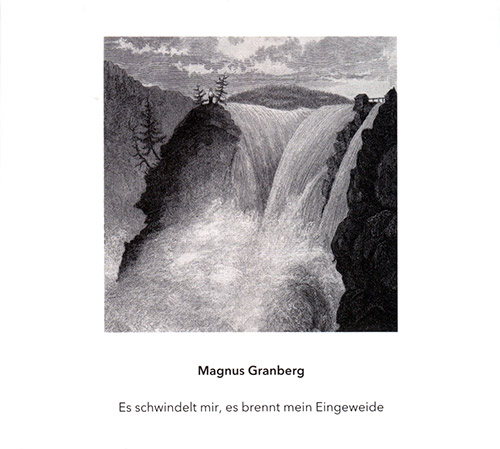

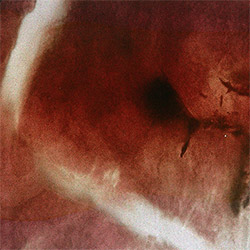


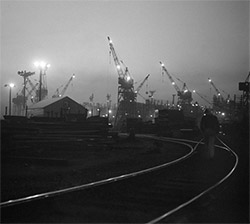




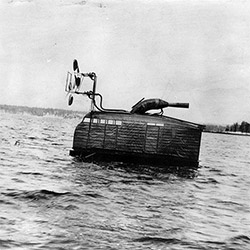
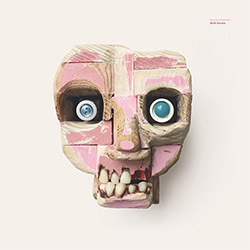


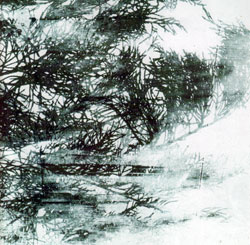
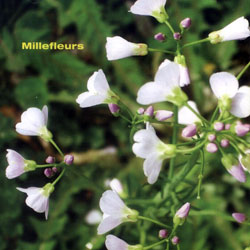
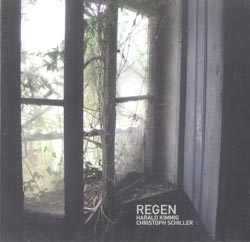


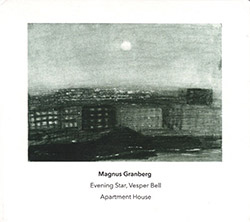
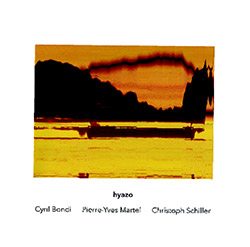


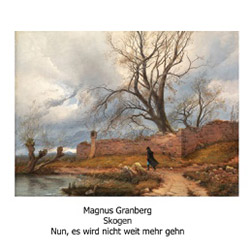




![Guy, Barry / Ken Vandermark: Occasional Poems [2 CDs]](https://www.teuthida.com/productImages/misc4/34849.jpg)
![Novoa / Carter / Mela Trio: Vol.1 [VINYL]](https://www.teuthida.com/productImages/misc4/35236.jpg)


![Elephant9 : Mythical River [VINYL]](https://www.teuthida.com/productImages/misc4/34624.jpg)
![Evans, Peter (Evans / Eldh / Black): Extra [VINYL]](https://www.teuthida.com/productImages/misc4/35279.jpg)

![McPhee, Joe: Straight Up, Without Wings [BOOK]](https://www.teuthida.com/productImages/misc4/35454.jpg)
![Jeck, Philip: rpm [2 CDs]](https://www.teuthida.com/productImages/misc4/35455.jpg)













![Barker / Parker / Irabagon: Bakunawa [VINYL]](https://www.teuthida.com/productImages/misc4/35533.jpg)
![Blaser, Samuel / Marc Ducret / Peter Bruun: Dark Was The Night, Cold Was The Ground [VINYL 10-inch]](https://www.teuthida.com/productImages/misc4/35492.jpg)








![Warren, Kenny (Warren / Hoffman / Ellman): Sweet World [VINYL]](https://www.teuthida.com/productImages/misc4/35451.jpg)




![Blake, Ran / Dave Knife Fabris: Live Amsterdam 2006, First Visit [CD + POSTCARDS]](https://www.teuthida.com/productImages/misc4/35275.jpg)













![DNS: Taking Big Bites Of The Khandas Three Cafes Deep [2 CDs]](https://www.teuthida.com/productImages/misc4/35334.jpg)




![Cleaver, Gerald: The Process [VINYL]](https://www.teuthida.com/productImages/misc4/34966.jpg)




![Alva Noto: HYbr:ID II [VINYL 2 LPs]](https://www.teuthida.com/productImages/misc4/35201.jpg)

![Baron, Derek / Luke Martin: Distinct and Concealed [CASSETTE + DOWNLOAD]](https://www.teuthida.com/productImages/misc4/35079.jpg)

![Lyle, Erica Dawn : Colonial Motels [CASSETTE + DOWNLOAD]](https://www.teuthida.com/productImages/misc4/35080.jpg)









![Sanna, Claudio: Compositori Sardi Contemporanei II [2 CDs]](https://www.teuthida.com/productImages/misc4/35317.jpg)






![Zurria, Manuel: Fame di Vento [3 CDs]](https://www.teuthida.com/productImages/misc4/35167.jpg)

![Frey, Jurg: Outermost Melodie [2 CDs]](https://www.teuthida.com/productImages/misc4/35039.jpg)

![Pavone, Jessica: Reverse Bloom [VINYL]](https://www.teuthida.com/productImages/misc4/34895.jpg)




![Modney (Modney / Wooley / Gentile / Roberts / Pluta / Symthe / ...): Ascending Primes [2 CDs]](https://www.teuthida.com/productImages/misc4/34852.jpg)









![Elephant9 with Terje Rypdal: Catching Fire [VINYL 2 LPs]](https://www.teuthida.com/productImages/misc4/35355.jpg)
![Deerlady (Obomsawin, Mali / Magdalena Abrego): Greatest Hits [VINYL]](https://www.teuthida.com/productImages/misc4/34876.jpg)




![Haino, Keiji: Black Blues [2 CDs]](https://www.teuthida.com/productImages/misc4/35109.jpg)



![Surplus 1980: Illusion of Consistency [CD]](https://www.teuthida.com/productImages/misc4/35069.jpg)
![Staiano, Moe: Away Towards the Light [VINYL + DOWNLOAD]](https://www.teuthida.com/productImages/misc4/35037.jpg)



![Caveira (Gomes / Sousa / Abras / Ferrandini): Ficar Vivo [VINYL]](https://www.teuthida.com/productImages/misc4/34643.jpg)
![Gregg, J. J. / David Van Auken: Lunar Prairie [CD w/ DOWNLOAD]](https://www.teuthida.com/productImages/misc4/34611.jpg)

![Coultrain: Mundus [VINYL]](https://www.teuthida.com/productImages/misc4/32439.jpg)
![Mattin: Songbook #6 [VINYL]](https://www.teuthida.com/productImages/misc4/27317.jpg)
![Punkappella: Wake Up [7-inch VINYL]](https://www.teuthida.com/productImages/misc4/17519.jpg)
![Residents, The: WARNING: UNiNC.: Live And Experimental Recordings 1971-1972 [VINYL 2 LPs]](https://www.teuthida.com/productImages/misc4/31521.jpg)
![Coultrain: Phantasmagoria [VINYL]](https://www.teuthida.com/productImages/misc4/30142.jpg)
![Lennon, Sean Ono: Asterisms [VINYL]](https://www.teuthida.com/productImages/misc4/34517.jpg)

![Coley, Byron: Dating Tips for Touring Bands [VINYL]](https://www.teuthida.com/productImages/misc4/17906.jpg)

![Lost Kisses: My Life is Sad & Funny [DVD]](https://www.teuthida.com/productImages/misc4/lostKissesDVD.jpg)